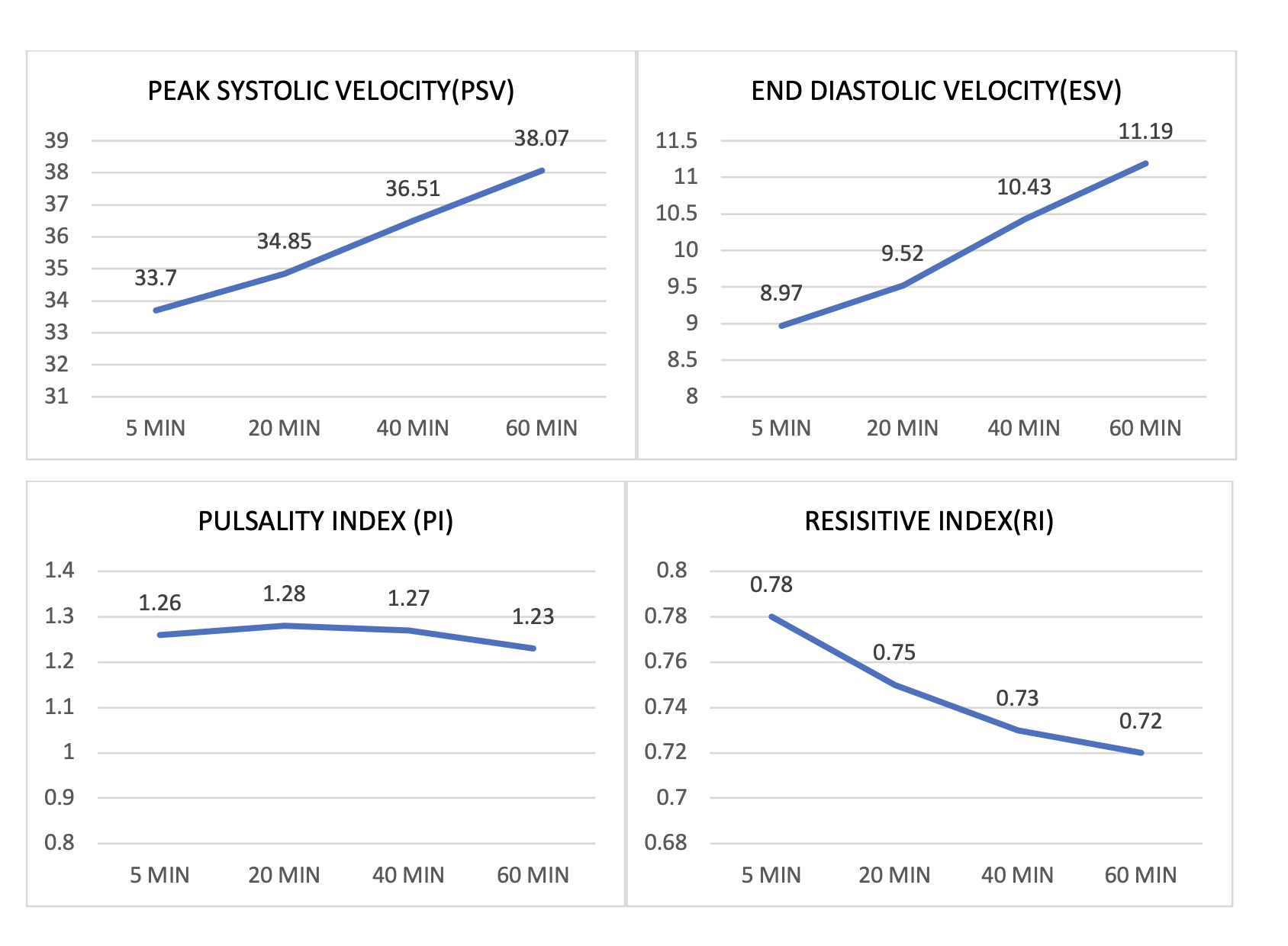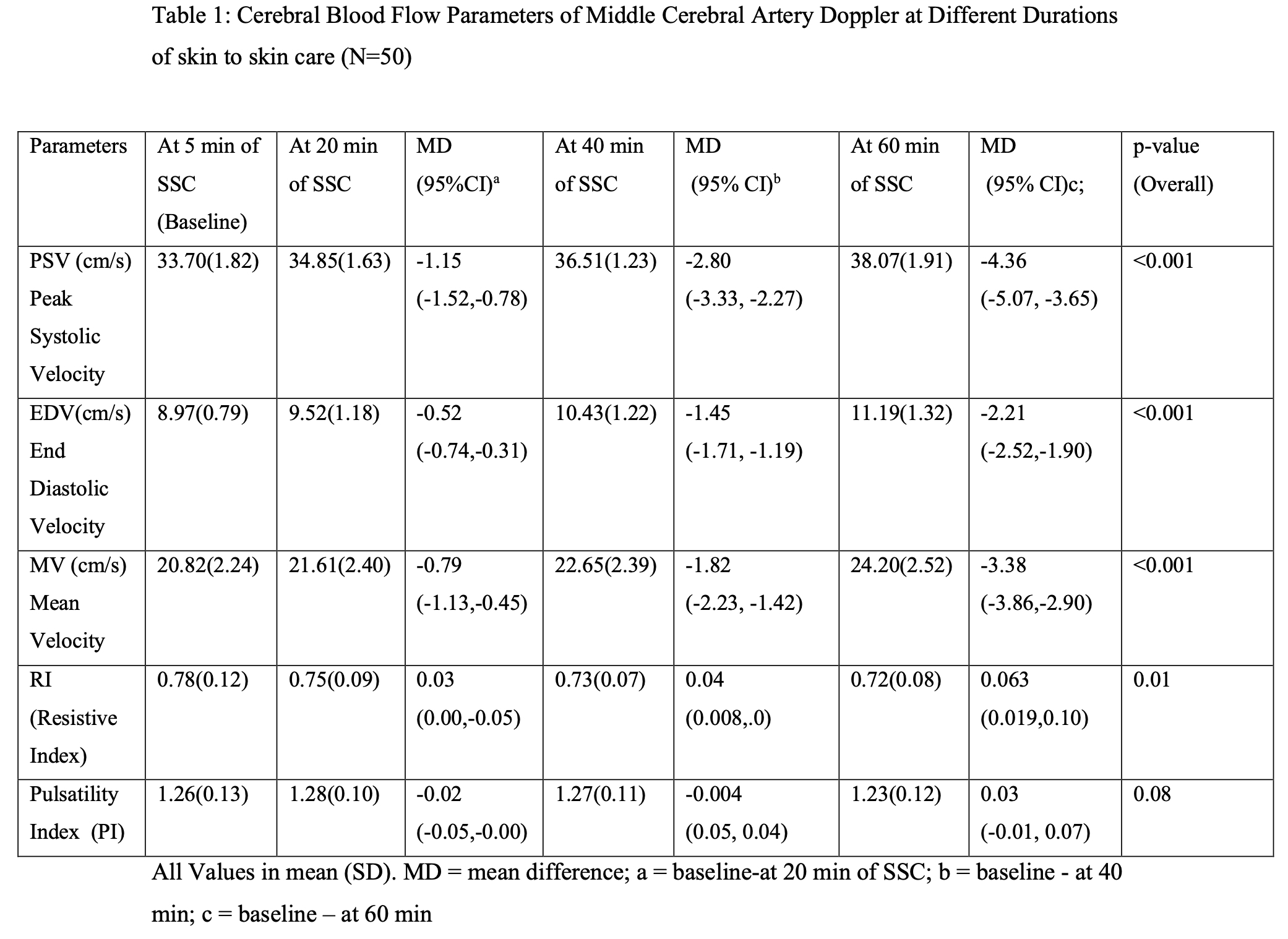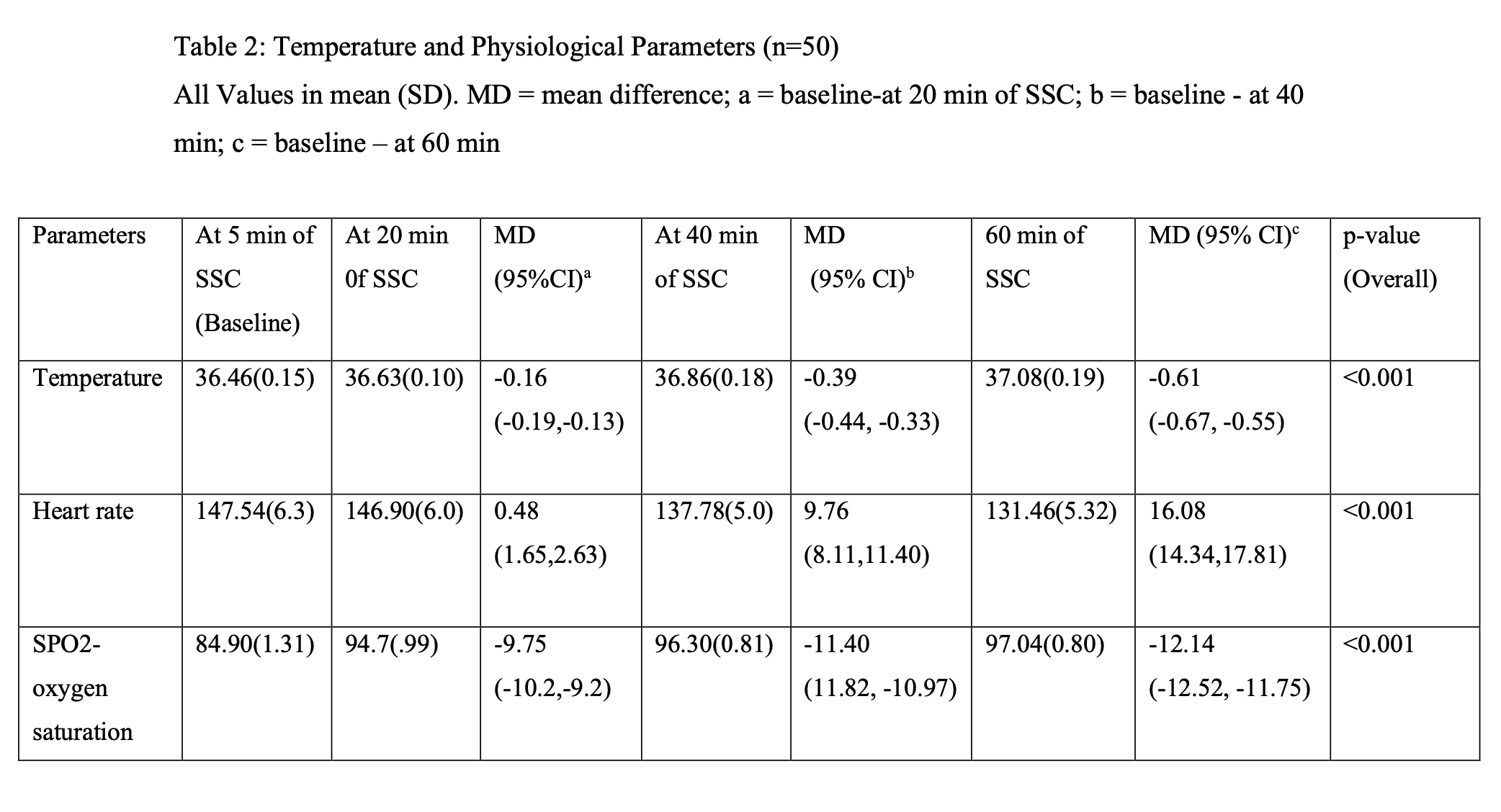Neonatal Hemodynamics and Cardiovascular Medicine 4
Session: Neonatal Hemodynamics and Cardiovascular Medicine 4
077 - Cerebral Blood Flow indices during immediate Skin-to-Skin contact in Term Neonates: a prospective observational study.
Saturday, April 26, 2025
2:30pm - 4:45pm HST
Publication Number: 77.4502
Somashekhar M.. Nimbalkar, Bhaikaka University, Karamsad, Gujarat, India; Satyender Yadav, Bhaikaka university, Karmsad, Gujarat, India; Dipen V. Patel, Shree Krishna Hospital, Pramukhswami Medical College, Bhaikaka University, Gujarat, India, Anand, Gujarat, India; Mayur Kiran. Shinde, Department of Community Medicine, Bharati Vidyapeeth Deemed to be University Medical College, Pune, Maharashtra, India., Puy, Maharashtra, India; Reshma Pujara, Shree Krishna Hospital, Bhaikaka University, Anand, Gujarat, India

Somashekhar M. Nimbalkar, n/a
Professor
Bhaikaka University
Karamsad, Gujarat, India
Presenting Author(s)
Background: Skin-to-skin Contact (SSC) is "Placing the baby naked on mother's bare chest, both of them covered by a cloth/blanket" and is recommended to start immediately after vaginal birth & continue for one hour or longer. Term neonates have better autoregulation in their cerebral blood flow than preterm neonates.
Objective: We evaluated the effect of SSC, given for sixty minutes and started immediately after birth, on cerebral blood flow (CBF) using MCA Doppler and vital parameters in stable-term infants.
Design/Methods: Clinically stable term newborns delivered through normal vaginal deliveries were included. Physiological parameters (heart rate and oxygen saturation measured using Massimo pulse oximeter at right wrist) and cerebral blood flow parameters of the middle cerebral artery [peak systolic velocity (PSV) end-diastolic velocity (EDV), Mean velocity (MV), pulsatility index (PI) and resistive Index (RI)] were collected at 5, 20, 40, and 60 min of SSC. Doppler imaging evaluation of the Middle Cerebral artery (MCA) was done by Transcranial color Doppler (TCD) ultrasonography machine with a high-resolution phased array transducer (Model P10x) of 4-8 MHz.
Results: 50 term neonates were enrolled, with 23 (46%) females & 47 (94%) where appropriate for gestational age (AGA). Mean (SD) gestational age was 38.4 (0.97) weeks & mean (SD) birth weight was 2.72 (0.32) kg.
Mean (SD) PSV increased significantly from 33.70 (1.82) cm/s at baseline to 34.85 (1.63) cm/s at 20 minutes (MD = -1.15; 95% CI: -1.52, -0.78), 36.51 (1.23) cm/s at 40 minutes (MD = -2.80; 95% CI: -3.33, -2.27), and 38.07 (1.91) cm/s at 60 minutes (MD = -4.36; 95% CI: -5.07, -3.65). EDV increased from 8.97 (0.79) cm/s to 9.52 (1.18) cm/s at 20 minutes (MD = -0.52; 95% CI: -0.74, -0.31), 10.43 (1.22) cm/s at 40 minutes (MD = -1.45; 95% CI: -1.71, -1.19), and 11.19 (1.32) cm/s at 60 minutes (MD = -2.21; 95% CI: -2.52, -1.90). Mean velocity increased significantly from 20.82 (2.24) cm/s to 24.20 (2.52) cm/s at 60 minutes (MD = -3.38; 95% CI: -3.86). The resistive index decreased significantly from 0.78 (0.12) to 0.72 (0.08) at 60 minutes (MD = 0.063; 95% CI: 0.019, 0.10) (Fig. 1). Pulsatility index shows no significant changes at any time point (Table 1). Physiological Parameters show similar changes (Table 2)
Conclusion(s): The mean cerebral blood flow parameters of MCA Doppler viz., PSV, EDV, MV, and RI improved significantly at 60 min of skin-to-skin contact compared to baseline values except PI. Similarly, the physiological parameters viz; temperature, heart rate, and SPO2 showed significant improvement at 60 min of skin-to-skin care from baseline.
Figure 1: Trend of Cerebral Blood Flow (CBF) Parameters over Time during Skin-to-Skin Contact
 Significant decline in Resistive Index seen here
Significant decline in Resistive Index seen hereTable 1: Cerebral Blood Flow Parameters of Middle Cerebral Artery Doppler at Different Durations of skin to skin care (N=50)

Table 2: Temperature and Physiological Parameters during the one hour
 Significant stabilization seen in the paramters.
Significant stabilization seen in the paramters.
